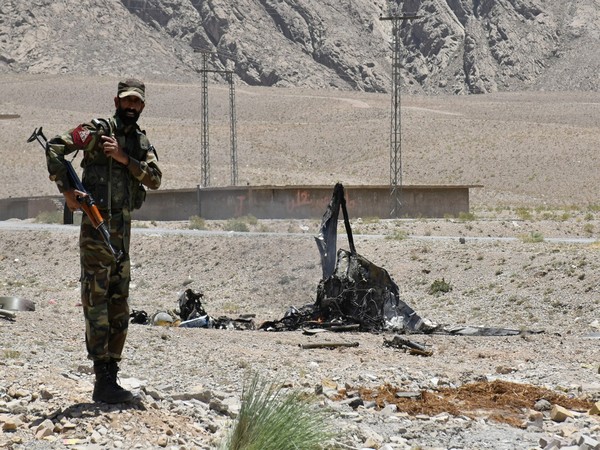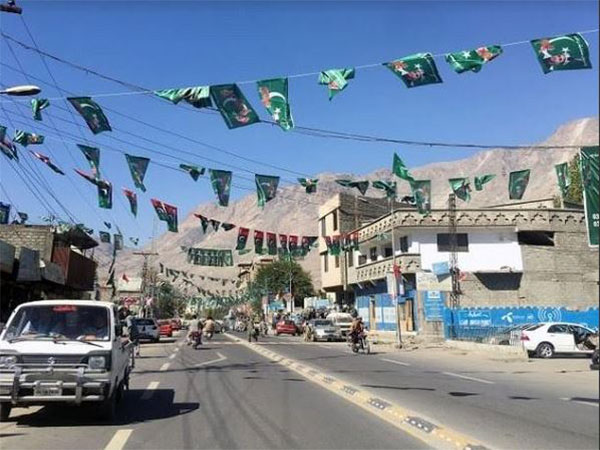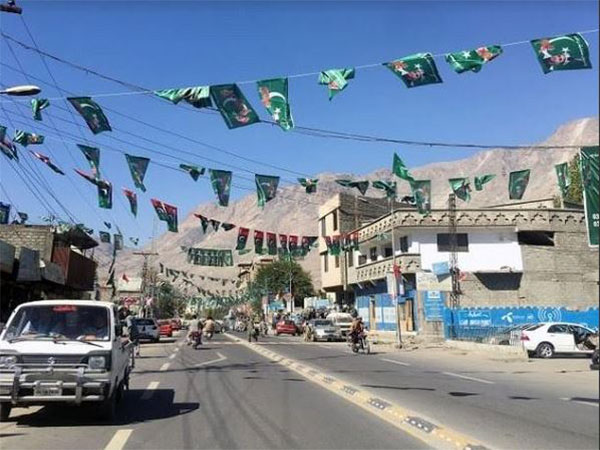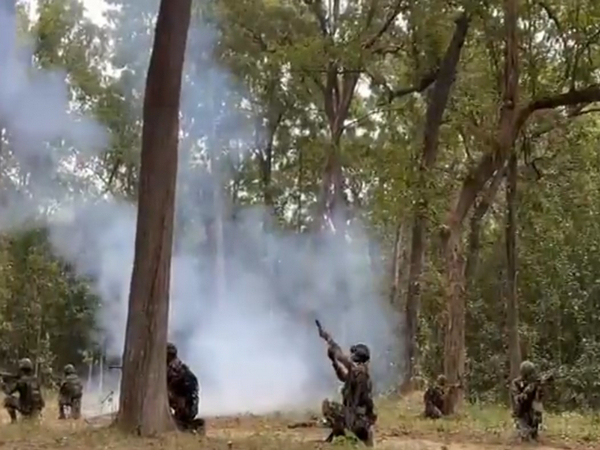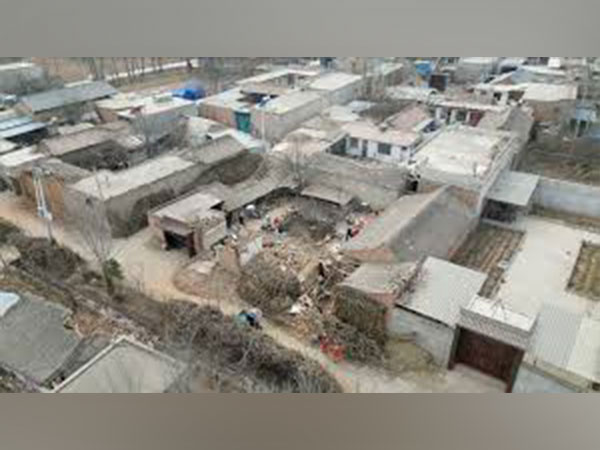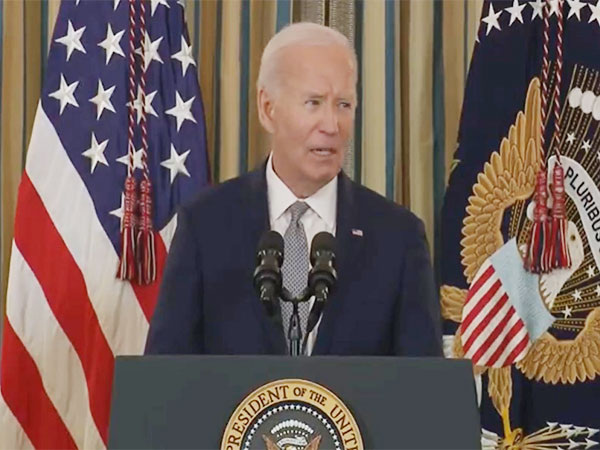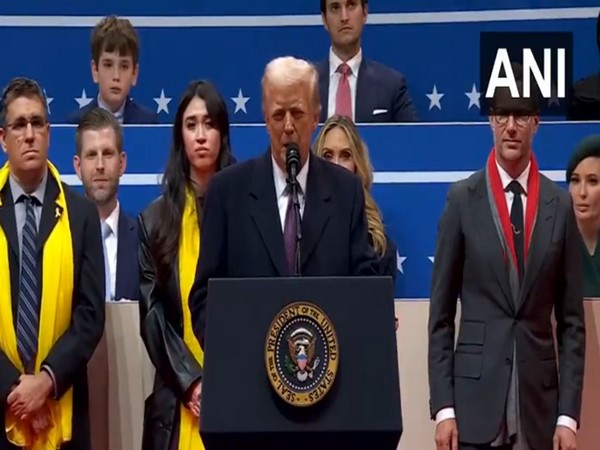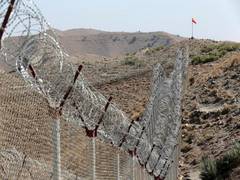
Bishkek [Kyrgyzstan], April 30 (ANI): An international conference on Afghanistan-Pakistan was held in which experts discussed the confrontation along the Durand Line between Taliban and Pakistani security forces. Experts opined that the main reason behind the confrontation is that Pakistan wants to influence the domestic issues of the neighbouring country.
The Taliban regime in Afghanistan does not recognize the British-era Durand Line as the boundary between Afghanistan and Pakistan. Violations along the Durand Line continue to remain a bone of contention between the two countries. A round table conference titled “Afghanistan in the context of world politics –Terrorism as a threat to the Central Asian region” was held at Kyrgyz-Russian Slavic University in Kyrgyzstan’s capital city Bishkek on April 29, 2022.
Mohammad Ishak Shafak, an Afghan researcher at Bishkek State University named after K. Karasaeva, participated in the seminar and presented a paper titled “Demarcation of the border of Afghanistan along the Durand Line: Dispute between the Taliban and Pakistan”. During his speech, Shafak noted that historically Afghanistan has never recognized this demarcation of the border between Afghanistan and Pakistan, and the Taliban did not do this either in the nineties, not now.
The round-table was jointly organized by the Center for European and Asian Studies (Russia, Yekaterinburg), Kyrgyz-Russian Slavic University (KRSU) (Kyrgyzstan, Bishkek), Center for Global Studies and International Relations, Institute of Contemporary International Problems, Diplomatic Academy of the Ministry of Foreign Affairs of the Russian Federation (Russia, Moscow).
Shafak gave a presentation on the issues faced by Afghanistan. According to the text of his presentation, Pakistan, the south-Eastern neighbour of Afghanistan has had tumultuous relations with Afghanistan since its independence due to its will to influence domestic matters of Afghanistan, such as providing support to Mujahidin during the Soviet invasion of Afghanistan. Its golden era of influence over Afghan politics has been during the emirate of the Taliban.
Pakistan, particularly its Inter-Service Intelligence (ISI) has played a greater role in support of the Taliban. In spite of refuting the claims of supporting the Taliban, Pakistan is one of three countries; Saudi Arabia and the United Arab Emirates, which had recognized in the 1990s. Similarly, it was the last country to cut diplomatic ties with the Taliban.
According to reports, even during the war campaign of the USA and its allies in Afghanistan and during the presidency of Hamid Karzai and Ashraf Ghani had taken a double approach to simultaneously support the war campaign of the US and also provide logistic and political support to Taliban.
Now with the recent takeover of Afghanistan by the Taliban, disputes between the two allies have risen. Border conflict on the Durand line between Afghanistan and Pakistan can be the start of such tensions between the traditional allies.
Recently with the death of some Pakistani soldiers orchestrated by the Tehrik-i-Taliban Pakistan (Pakistani Taliban), with the claim that Taliban are providing support to Tahrik-i-Taliban of Pakistan to do such attacks bombarded targets in Khost and Kunar during the night which resulted in the death of 47 ordinary citizens of Pakistan such child and women. With such attacks, Taliban authorities have summoned a Pakistani ambassador to Afghanistan and warned of such attacks.
The Durand Line, which many consider to be a British conspiracy, was drawn by British colonial representatives more than 100 years ago in 1893 between the borders of Pakistan (then East India) with Afghanistan, which has not been formally recognized by any group or government in Afghanistan.
In 1893, during the reign of Amir Abdul Rahman Khan in Afghanistan, a border treaty was signed between Amir and Durand, the representative of British-occupied India, which defined the border between British India and Afghanistan as the Durand line. After Abdul Rahman’s rule, almost all Afghan rulers opposed the border, and to this day no government in Afghanistan, including the Taliban, has officially recognized these borders.
A number of well-known scholars in the history and political affairs of Afghanistan, including Mohammad Hassan Kakar, have written about the Durand line Agreement. According to Mohammad Hasan Kakar, the Durand agreement is a temporary, not permanent one, which allowed the British to dominate and control strategic areas that would prevent Tsarist Russia from invading India through Afghanistan.
The Durand Treaty was signed on October 12, 1893, between Amir Abdul Rahman Khan and Sir Henry Mortmore Durand, in September 1947. When Pakistan joined the United Nations, Afghanistan was the only country to vote against the recognition and membership of Pakistan in the United Nations due to its claimed territories beyond the Durand Line. Meanwhile, Shah Mahmood Khan, the then Prime Minister of Afghanistan, announced in London on July 31, 1947, that the previous treaties on the Indo-Afghan border with British India would be annulled with the independence of Pakistan.
Afghanistan strongly opposes Durand Line. Although the Pakistani government and the international community, with the exception of India, recognize the Durand Line, Afghanistan is unwilling to accept these borders. According to claims and documents from Afghanistan, the Durand Line separates much of the territory from its mainland. Afghan leaders believe the Durand Line has separated Pashtuns who have close family ties.
This 2430 km long border line has separated Pashtuns living in the west (Pakistan) and Pashtuns living in the east (Afghanistan). The separation of the Pashtun tribes due to the common tribal identity and the many visits between them caused the dissatisfaction of the Pashtun leaders. Until a few years ago, Pashtun tribes lived in the autonomous regions between Afghanistan and Pakistan, but for several years now, the Pakistani government has effectively cut off communication between them by building border walls and fences. The Pakistani government has tightened control of the border, especially border crossings, arguing against counterterrorism.
Pakistan’s efforts to separate Pashtun and Baluch tribes on both sides of the border. On the other hand, the Pakistani government is practically trying to reduce the power of tribes by creating security fences and separating the Pashtun and Baluch tribes on both sides of the border. The tribes on both sides of the border, especially the Pashtuns, have been in a state of tribal and autonomous rule for years, but the Federal government of Pakistan is trying to reduce their power and authority.
The construction of border fences and movement control in the region effectively leaves the Pakistani government free to exercise central federal power. Recently, it seems that the Taliban are also trying to form a greater Pashtunistan. The Taliban, most of whom are from different Pashtun ethnic groups, are also trying to unite the Pashtun tribes on both sides of the Durand Line by ignoring the Durand Line so that in the long run, the idea of a Greater Pashtunistan can be implemented.
Over the past hundred years, when the borders of British India, which included present-day Pakistan, have been drawn with Afghanistan, two countries have clashed on the Durand Line under various pretexts, and these events are still not far-fetched, given the region’s tribal and geographical location. So far, no government in Afghanistan has recognized the borders of 1893 defined by the Durand Line, and until this problem is resolved, the concerns of the two countries and their neighbours will remain.
According to political experts, the dialogue of high political officials, the parliaments and tribal leaders of the two countries, the establishment of joint border committees, especially with the presence of tribal leaders, and the use of the potential of neighbouring countries can resolve some of the misunderstandings and border problems between the two countries.
The Durand Line Treaty of 1893, signed between British India and the then Emir of Afghanistan, Amir Abdul Rahman Khan, was signed by the British in the form of a personal treaty to determine their sphere of political influence, not as a treaty of governments. The Durand Line Treaty is not just an agreement, but a series of different agreements (for example The Treaties of 1893, 1905, 1919, 1921).
There were problems with the first Durand Line Treaty, which is why British India negotiated with each Emir; consequently, with the independence of Afghanistan in 1919, the Kabul Treaty was signed between the two governments, which completely annulled the previous treaties.
Under the Durand Line Charter, the boundary set is a hypothetical boundary and has never been marked as complementary. The Emirs and later all the monarchies of Afghanistan, the Republic, the Communists, the Mujahideen, the former Taliban, the elected Presidents, and now the current Taliban government rejected this line. They never accepted the Durand Line as the official border.
After British India and with the formation of Pakistan on 14 August 1947, all claims made by Pakistan in accordance with international conventions on the Durand Line can be legally challenged by Afghanistan. The southern and eastern borders of Afghanistan, as seen on the current maps, are completely different from the map outlined in the Durand Line and are not the result of any agreement or treaties.
Historically, the tribes living along this line were not Indian nationals even in British India, and these tribal areas were occupied by force only to prevent Afghanistan’s political and military influence from playing the big game; That is why the British have always faced war and resistance in these areas.
Experts from Kyrgyzstan, Russia, Tajikistan, Kazakhstan, Uzbekistan and Afghanistan participated in the round-table to deliberate about issues related to the events after the fall of Kabul in August 2021 and the change of power in Afghanistan. (ANI)







